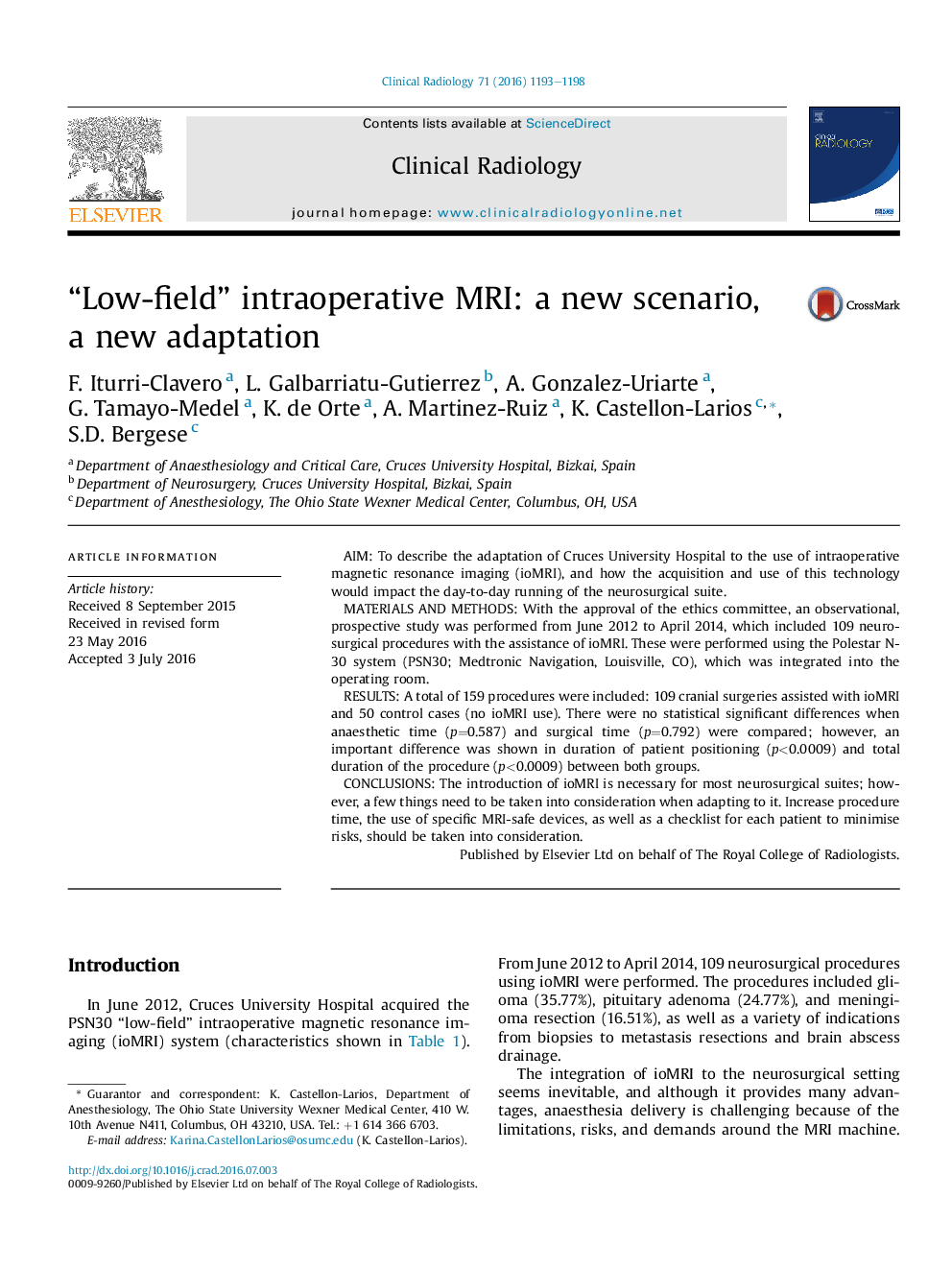| Article ID | Journal | Published Year | Pages | File Type |
|---|---|---|---|---|
| 3981122 | Clinical Radiology | 2016 | 6 Pages |
•We compared the use of new technology (intraoperative MRI) into our neurosurgical suites.•We specified checklist that would help accelerate operating room times when there was a need to use intraoperative MRI.•The use of ioMRI to neurosurgical procedures increases overall operating time, mostly due to patient positioning.
AimTo describe the adaptation of Cruces University Hospital to the use of intraoperative magnetic resonance imaging (ioMRI), and how the acquisition and use of this technology would impact the day-to-day running of the neurosurgical suite.Materials and methodsWith the approval of the ethics committee, an observational, prospective study was performed from June 2012 to April 2014, which included 109 neurosurgical procedures with the assistance of ioMRI. These were performed using the Polestar N-30 system (PSN30; Medtronic Navigation, Louisville, CO), which was integrated into the operating room.ResultsA total of 159 procedures were included: 109 cranial surgeries assisted with ioMRI and 50 control cases (no ioMRI use). There were no statistical significant differences when anaesthetic time (p=0.587) and surgical time (p=0.792) were compared; however, an important difference was shown in duration of patient positioning (p<0.0009) and total duration of the procedure (p<0.0009) between both groups.ConclusionsThe introduction of ioMRI is necessary for most neurosurgical suites; however, a few things need to be taken into consideration when adapting to it. Increase procedure time, the use of specific MRI-safe devices, as well as a checklist for each patient to minimise risks, should be taken into consideration.
